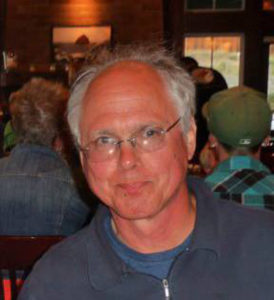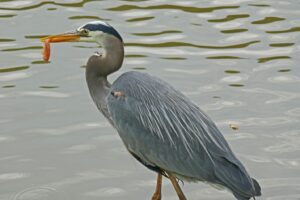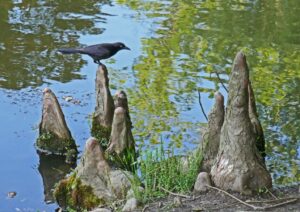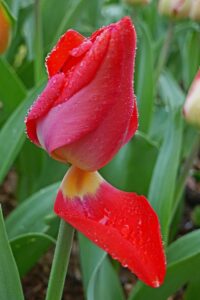
For nearly forever, work is where I sought and found community. I knew it fell heavily on me to see that we had enough business to keep everybody employed, so they could feed themselves and their families, and so new jobs could be created. I connected to other communities—the YMCA, the American Film Institute, even church—but work was number one. As big deadlines approached, we sometimes settled in and worked around the clock.
After work morphed and I moved on, the YMCA took over as number one. I spent two hours there daily, sweating and talking. Over time, the social aspect became more important than the exercise. Now and then, a Y connection spilled over into the larger community. To show how special the YMCA was, one day as I walked through a room of weight machines, I asked a friend, “Who do you think is the greatest short story writer?” Within minutes, four people joined our conversation, offering suggestions or putting parameters on the question. Into the locker room and sauna people carried and reintroduced my question. By week’s end, dozens had engaged in considering the question. People at the YMCA loved conversation.
Weeks before the COVID pandemic was declared, it was clear extraordinary efforts were made to sanitize the locker room and adjacent spaces. The chief janitor said, “Some really weird viruses are going around.” My wife and I began a self-imposed lockdown three weeks before pandemic was declared. I wondered how I’d survive without the YMCA’s social interaction. I feared my body would implode without access to a sauna to calm back and leg spasticity. By the time the pandemic was declared, I was starting to realize I didn’t need the sauna.
Walking at a 50-acre garden park, incorporating formal gardens, several ponds, and looping trails—quickly becomes the only place I go outside the home. I’d been walking there occasionally before, but not daily. I thought of it as communing with nature rather than community. I begin exchanging greetings with a growing cast of not-yet-masked regulars.

As layoffs occur, the park becomes nearly as full mid-week as on weekends. At first, it feels like a fiesta, as if national vacation had been declared. People come to play, walk, ride bikes, escape screens, smell the flowers, picnic, get their one hour of approved outdoor time. When masks make it difficult to talk, regulars still communicate with their eyes or gestures. At nearly any moment, though, most of the people in the park aren’t regulars. Everyone is welcome here at The People’s Park, where all the posted rules—against playing sports, riding bikes, going barefoot, walking dogs, feeding wildlife, and picnicking—have been suspended.
***
As people pass or converge on the paths head-on, social distancing can be difficult. The very notion of social distancing—of staying at least six feet away—runs contrary to normal park etiquette, which encourages passersby to pause in close proximity for brief exchanges on, say, nature, seasonality, and the dissipation of energy. But in lockdown mentality, old couples or mothers pushing strollers suddenly jump off the path to expand the walking space and keep a safe distance away. People are exceptionally friendly, though, and offer quick hellos with their eyes before speeding by.

One day in late March, I go to the park even though it’s raining because walking here is my only daily ritual. I’m a veteran walker here, not just a homebound desperado seeking escape from obsessive thoughts about COVID and whether masks make us safer. I’m one of those desperados too, but I had prior experience before becoming one.
Because it’s raining, hardly anybody else is there. I have the park almost to myself. I don’t need to wear this mask. I don’t have to push myself. I can stop at will to take pictures if a weeping cherry, the roots of a cypress tree, or a sheltered heron catch my attention.

As I complete the first loop of a figure eight, which ought to take thirteen minutes but with pictures in the rain takes longer, I’m about to cross a bridge that takes me sixteen strides. To my right I see the smile of a tall black woman, probably mid-30s, wearing an Army-green hooded rain jacket. That smile gives me a feeling of completeness. She turns and says, “Hi.” Her “hi” is different from most. As people walk the park’s pathways, their hi’s feel more like “hi-byes,” more like departures than arrivals. But her “hi” feels more like for a moment we’re pausing and recognizing each other in our solitariness. She crosses the bridge ahead of me, probably getting across in twelve strides.
The distance between us increases as we begin a different loop. Soon, she is out of sight. As I make my way through the formal garden, the tulips look especially beautiful in the rain. I stop at one where one of the petals had fallen outward. Two days ago, I saw a crouching white woman taking pictures of that very tulip. I later wished I had taken her picture as she tried to capture that tulip. Then yesterday, as I approached that tulip bed, a different woman—I believe she was Chinese—was crouching down to photograph the identical tulip. That time, I wasn’t deterred, I got her picture and when she moved on to another tulip bed, I took her picture three more times. After the last one, she turned to me and I said, “I like to take pictures of photographers.” She smiled in a way that said, “We all have our thing,” and resumed her task. Today, nobody is photographing the tulips drenched in raindrops except for me. I finally get to photograph the red tulip with the one petal falling outward, pooling rain.

As I finish the garden bed loop, I see the woman in the green hooded rain jacket with whom I had shared “hi.” She is running across the bridge, probably in 8 strides. After she crosses the bridge, she comes to a stop and resumes walking. She turns to head up the hill toward the parking lot. As her path crisscrosses mine, from 50 feet away she yells, “Are you okay?” I’m probably crouching over more than usual because of the rain. I yell back, “I’m okay. I’m just slow.” As she continues walking up the hill, she says, “I was trying to run.” I say, “Running is just a distant memory.” And she disappears behind a flowering cherry tree.
I head for the bridge of sixteen strides perhaps it should be sixteen sighs and cross, this time from the opposite direction. It’s raining more heavily now. My last loop that normally takes 13 minutes takes longer even though I don’t stop for pictures. I walk in the center of the path as if I owned it because there isn’t anybody else to make room for. A couple I don’t see coming toward me jump off the path and walk on the sopped grass to maintain social distance. I should stay more alert, I shouldn’t have forced them off the path. I reach the nearly empty parking lot, wetter than I expected. I can’t wait to get home and out of these clothes.
I glance to my right. There she is, the woman in the green hooded rain jacked with whom I exchanged “hi” who later asked me “are you okay?” She should be long gone by now. What’s she doing here? As our eyes connect, from 100 feet away, she yells, “You’re not slow.” I laugh, “I am slow, but it’s okay. You run every day?”
We begin walking toward each other. From 50 feet, she says, “I’m just trying to learn. I was meeting two other people here, but they gave up before I did.” How could the fools leave? I say, “My body gave up on running long ago.” She says, “It’s hard on the knees. I feel it already.” She lifts her left leg and touches her knee. I say, “My knees weren’t a problem. My back gave out.”
From 20 feet away, she asks, “Is running even a good idea?” I still dream about running highs. I nod, “Oh, yes. Take it slow. And remember to stretch.”
From six feet away, she says, “I will.. Ah, there it is, she’s giving me another one of those smiles like she did before, a smile that says here we are, alone, together, in this moment.
***
Nearly six months have passed. I never saw her again. Perhaps wearing masks we didn’t recognize each other. The tulips left too soon. After the state’s mask mandate went into effect, I began reminding people who weren’t wearing one, but quickly stopped. One day I realized how much I loved seeing the maskless faces of happy people. As summer ended, kids went back to Zoom school. I still see dozens of regulars, but not everyone, every day. Sometimes, we speak words through our cloth masks, but mostly, we smile with eyes and gesture with hands. Now and then a stranger, often a teenage girl, reassures me, “You’re walking well today.”

One recent Sunday, a masked walker stops me, recognizing me from the YMCA. He introduces his wife and mother-in-law. I recognize the Latinas as YMCA janitors. They’re still out of work because hardly anyone returned to the YMCA after its reopening. Mom says, “I’m home with the children, anyway.” Grandma says, “I’ll never go back.” We part, I linger in the rose garden, walk beneath a trellis, and duck back into the rose garden to avoid photobombing a Black couple’s engagement pictures. I turn too sharply and get caught by a tall rosebush.
Stepping away from their photoshoot, the woman presses her palm against my back, asking, “Are you okay?” as the man helps disentangle the thorns from my clothes as if solving a Rubik’s Cube. Freed, I apologize for getting in their way; the photographer says, “No, we got in your way.” I take one last look into their eyes, go on my way, return to my car, and cry.
This makeshift community I’ve found is more diverse than any I’ve ever known. Living in one of the most diverse counties in the country, that should come as no surprise. But work was predominantly White. The YMCA I experienced was predominantly White, male, older. The park, however, is predominantly nothing, it’s everything. I thank my lucky stars the pandemic brought us together to find and nourish this new community in the People’s Park.